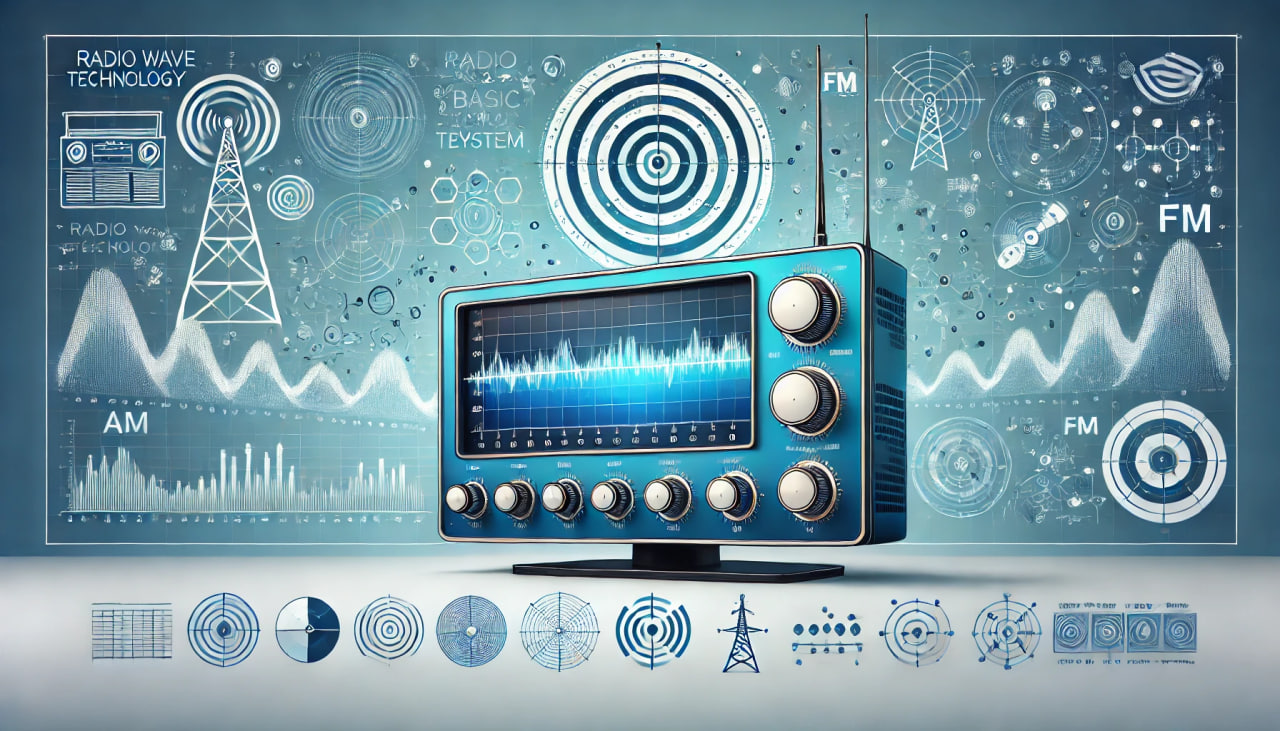Basics of Radio Technology: What a Beginner Radio Enthusiast Needs to Know
 Christopher Wilson
Christopher Wilson
Embarking on the journey of radio technology can be both fascinating and overwhelming. For beginner radio enthusiasts, understanding the basics is essential to fully appreciate and utilize the capabilities of radio communications. This comprehensive guide will introduce you to the fundamental concepts of radio technology, providing a solid foundation for your exploration into this exciting field.
Understanding Radio Waves and Frequencies
At the heart of radio technology are radio waves, a type of electromagnetic wave that travels through the air and carries information over vast distances. These waves are characterized by their frequency, measured in hertz (Hz), which indicates the number of cycles per second. The radio frequency spectrum ranges from very low frequencies (VLF) below 30 kHz to extremely high frequencies (EHF) above 300 GHz.
Radio waves are divided into several bands, each with specific applications. For instance, Very High Frequency (VHF) bands (30 MHz to 300 MHz) are commonly used for FM radio, television broadcasts, and amateur radio. Ultra High Frequency (UHF) bands (300 MHz to 3 GHz) are used for television broadcasting, mobile phones, and GPS. Understanding these frequency bands is crucial for any radio enthusiast as it determines the type of communication possible.
Basic Components of Radio Systems
A typical radio system comprises several key components: the transmitter, receiver, antenna, and the medium through which the radio waves travel.
Transmitter: This device generates and sends out the radio waves carrying the desired information. It converts electrical signals into radio waves and broadcasts them through an antenna.
Receiver: The receiver captures the radio waves and converts them back into electrical signals, which can then be processed to retrieve the transmitted information. This is essential for decoding the message sent by the transmitter.
Antenna: Antennas are crucial for both transmitting and receiving radio waves. They convert electrical signals into radio waves (transmitting) and radio waves back into electrical signals (receiving). The design and placement of antennas significantly impact the quality and range of radio communications.
Medium: The medium, usually the atmosphere, through which the radio waves travel. Various factors, including weather conditions and obstacles, can affect the propagation of radio waves.
The Role of Modulation
Modulation is a technique used to encode information onto a carrier wave for transmission. There are different types of modulation, each with its advantages and applications:
Amplitude Modulation (AM): This involves varying the amplitude of the carrier wave in accordance with the information signal. AM is widely used in commercial radio broadcasting.
Frequency Modulation (FM): FM varies the frequency of the carrier wave based on the information signal. It offers better sound quality and is less susceptible to noise and interference, making it ideal for music and speech broadcasting.
Phase Modulation (PM): PM changes the phase of the carrier wave to encode information. It is often used in digital signal transmission.
Understanding modulation is vital for any radio enthusiast, as it determines how effectively information can be transmitted and received.
Licensing and Regulations
Operating a radio transmitter typically requires a license. Licensing ensures that operators adhere to regulations designed to prevent interference and ensure efficient use of the radio spectrum. The requirements for obtaining a license vary by country but generally involve passing an examination that tests knowledge of radio theory, operating practices, and regulations.
For example, amateur radio operators (hams) must pass exams to receive different classes of licenses, each granting access to various frequency bands and operating privileges. These licenses encourage operators to learn more about radio technology and demonstrate their competency.
Choosing Your First Radio Equipment
Selecting the right equipment is a critical step for any beginner. Entry-level options include handheld transceivers (HTs), which are portable and easy to use, making them ideal for beginners. Base station radios offer more power and capabilities but require a dedicated setup space.
When choosing equipment, consider the type of communication you are interested in (local vs. global), your budget, and the space available for antennas. Additionally, joining a local radio club can provide valuable insights and recommendations based on the experiences of other enthusiasts.
Building and Using Antennas
Antennas play a pivotal role in the performance of a radio system. Different types of antennas are suited for various applications:
Dipole Antennas: Simple and effective, dipole antennas are widely used in amateur radio. They consist of two conductive elements and are usually half a wavelength long.
Vertical Antennas: These are omnidirectional and suitable for ground-wave propagation, making them ideal for local communications.
Directional Antennas: Also known as beam antennas, these focus the radio waves in a specific direction, enhancing signal strength and reducing interference from other directions.
Constructing your own antennas can be a rewarding experience and allows for customization based on your specific needs and constraints.
Engaging with the Radio Community
One of the most enriching aspects of being a radio enthusiast is connecting with the community. Joining local or online radio clubs provides opportunities to learn from experienced operators, participate in events, and access resources. These communities foster a collaborative environment where knowledge and skills are shared freely.
Participating in events such as field days, contests, and emergency communication drills can enhance your skills and provide practical experience. These activities also highlight the important role of radio technology in public service and emergency response.
Troubleshooting and Maintenance
Maintaining your radio equipment and troubleshooting issues are essential skills for any radio enthusiast. Regularly checking connections, cleaning components, and updating software can prevent many common problems. Understanding basic electronics and signal processing helps in diagnosing and fixing issues, ensuring that your equipment remains in optimal condition.
The Future of Radio Technology
The field of radio technology is continually evolving, with advancements in digital communication, software-defined radios (SDRs), and integration with internet technologies. Staying updated with these developments can open new avenues for exploration and experimentation.
Digital modes, such as DMR (Digital Mobile Radio) and D-STAR (Digital Smart Technologies for Amateur Radio), offer enhanced capabilities and integration with internet networks, expanding the scope of traditional radio communications. SDRs provide flexibility by allowing operators to use software to process radio signals, enabling more complex operations and easier upgrades.
Conclusion
The world of radio technology offers endless opportunities for learning, experimentation, and communication. As a beginner, understanding the basics of radio waves, components, modulation, and licensing is crucial. Engaging with the radio community and continually updating your knowledge will help you grow as an enthusiast. With dedication and curiosity, the possibilities in radio technology are boundless. Welcome to the exciting world of radio, where every transmission is a new adventure.
https://fileenergy.com/pokupki-v-kitae/ekshn-foto-i-video-kamera-akaso-v50-pro-s-vneshnim-mikrofonom
Subscribe to my newsletter
Read articles from Christopher Wilson directly inside your inbox. Subscribe to the newsletter, and don't miss out.
Written by
